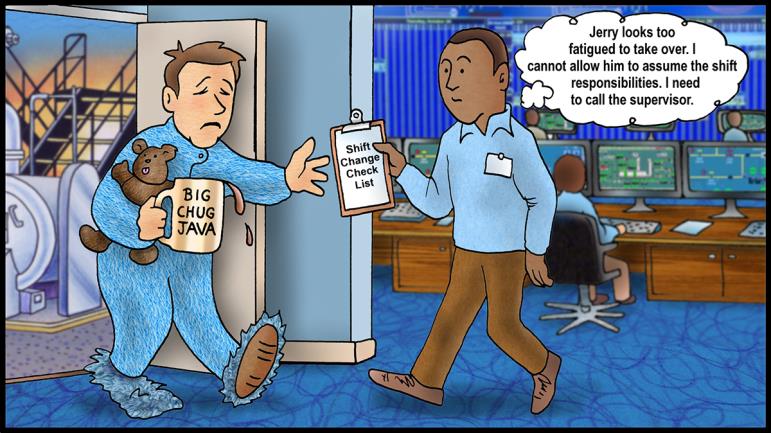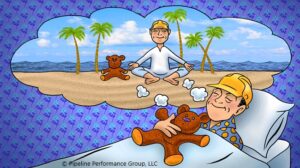Too Tired to Work Safely
Do you show up to work in your pajamas? I was in a control room a few years ago at the evening shift change. Most of the controllers arrived in their normal, acceptable work wear for night shift – pants, shirts, socks, and shoes. One was wearing pajama type apparel. I know, I know; people wear pajama type apparel everywhere nowadays. All of us want to be comfortable all of the time. What effect could wearing pajama type apparel have on a person’s alertness levels on night shift? If the person relieving you showed up in pajamas, would that concern you?
Many years ago, when I was a shift worker where only one person was on duty each shift, one of my peers who had a second job had this practice: he would put a jumper on the automatic gate opener so it would alarm if someone opened the gate. Then he would put his portable cot out, set an alarm near times when he had to perform an operations task, and sleep the rest of the time. He got caught sleeping on the job on a holiday. He did not think anyone would come to the facility on a holiday and did not install the jumper on the gate control. The supervisor did come to work early that morning. What effect could sleeping on the job at a one-person facility have on safe operations if an abnormal operating condition or emergency occurred?
- What are your personal values and professional practices related to the appropriate clothing that can contribute to either drowsiness or alertness?
- What are your personal values and professional obligations about using off-duty time between shifts to achieve as much sleep as possible instead of working a second job, pursuing recreational opportunities, or doing some other type of activity that reduces the sleep opportunity?
- What are your personal values and professional obligations about sleeping on the job at the workstation, even if you do not install a portable cot?
What does your company’s fatigue risk management system (FRMS) specify if someone shows up to relieve you and the person is evidently not fit to assume the responsibilities? The FRMS should not only contain a mechanism for people to self-report their own fatigue; it should provide a means for peers and supervisors to refuse to allow someone who is not fit for duty to assume duty. Does your plan do so?
I have seen some plans where the person assuming shift “agrees” to a statement in the shift change documentation that he or she is fit for duty, had adequate rest, or a similar statement. How many would sign that statement even if he or she did not have adequate rest?
In the six years since the “fatigue mitigation” section of the Control Room Management regulations has been required, are there instances where a person who was too tired to work safely worked anyway? I know it used to be that way regularly because someone (any available person) had to work the console or respond to the call out or make the repair.
The purpose of a FRMS is to reduce the risk of a fatigue related incident that can harm people, property, or the environment. How seriously are we, as companies and individuals, implementing steps to identify and then mitigate risks? We were asked to provide “fatigue recognition” training for supervisors at a refinery a few years ago because one supervisor removed an operator who was sleeping at the console from duty. That supervisor was roundly criticized for taking the appropriate action by all of the other supervisors. What would happen in your control room?
Be sure this issue is addressed in your written CRM plan and the daily implementation of that plan.
MANAGING FATIGUE EDUCATIONAL PROGRAM | Charles Alday © 2018 Please Distribute to Others.




